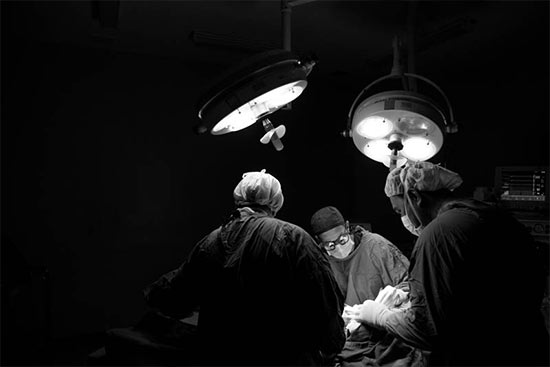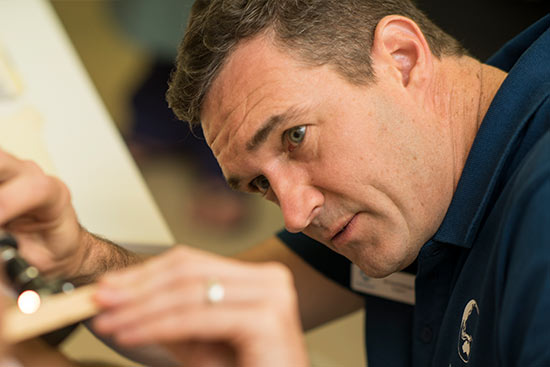Breast Reconstruction
Breast reconstruction uses a variety of techniques to replace and recreate the shape of your breast

Following mastectomy to treat breast cancer, or as a preventative measure in high-risk families, many women choose to have a breast reconstruction in order to give them a more whole or balanced appearance. This can have many benefits for a woman’s sense of well-being, as well as for her physical, sexual, and psychological health. We provide a comfortable, trusting environment for our patients; following a mastectomy we understand that patients can feel uncomfortable about their body which is why we prioritise your wellbeing.
What is breast reconstruction surgery?
Breast reconstruction surgery involves making a new breast mound, either with the use of a breast implant or some of your own tissue. Breast implants are filled with silicone or saline, and may need a preliminary stage of gradual inflation before the final prosthesis is inserted.
In cases where the breast mound is made with your own tissue, it will be taken from the upper back or the lower abdomen. A new nipple is constructed by folding up flaps of skin from the breast, while medical tattooing can be performed in order to recreate the
natural colouring of the nipple.
What are the benefits of the procedure?
Breast reconstruction surgery is performed following the removal of a breast (mastectomy) in order to treat breast cancer, or to reduce the chances of developing cancer in those with a high genetic risk. The procedure can be very helpful in restoring a sense of well-being and contributes greatly to a woman’s physical, sexual, and psychological health following breast cancer treatment. The options for breast reconstruction should be discussed with every woman who requires a mastectomy so that they understand their choices. However, not all women will choose to undergo breast reconstruction surgery.
Is Mr Morgan experienced in performing breast reconstruction surgery?
Mr Morgan has had many years of experience in breast reconstruction surgery techniques, especially related to the use of breast implants. He has also undertaken additional training overseas in breast surgery techniques. With a particular interest in breast surgery, he is dedicated to providing successful results for his patients. Mr Morgan and his team pride themselves on providing a warm and welcoming environment, and will take the time to listen to your individual needs and concerns.


How is breast reconstruction performed?
Breast reconstruction involves making a new breast mound using either a breast implant or the patient’s own tissues. Breast implants can be filled with either silicone or saline, and may need a preliminary stage of gradual inflation over time to allow the tissues to stretch before inserting the final implant. Reconstruction can be performed during the same surgery as the mastectomy (immediate reconstruction), or delayed until all forms of treatment have been completed (delayed reconstruction).
A breast mound can also be made by using the patient’s own tissue. The tissue can be a muscle taken from the upper back, called the latissimus dorsi flap, or can be made entirely from the lower abdominal tissue, called either a TRAM flap, or a DIEP flap. To complete the reconstruction, a new nipple can be made by folding up small flaps of skin from the breast. This is usually performed several months later when the new breast has settled into position. Medical tattooing can then be used to recreate the natural colouring of that part of the breast.
A reconstructed breast will not always match the remaining natural breast perfectly. Balancing procedures to lift, reduce, or fill the other breast may be required to achieve better symmetry.

How long will I need to recover?
For women undergoing immediate breast reconstruction (at the same time as the mastectomy), recovery can take some time. This is due to the significance of both the recovery from the mastectomy, and any additional treatment required, as well as having the reconstruction performed. The operation itself can take up to 8 hours if microsurgery is required to perform the reconstruction, and hospital stays can stretch to 10 to 14 days. Physically recovering from all of the surgery may take several weeks, with normal activity returning in a couple of months.
Delayed reconstruction performed after the completion of all other treatments may only need shorter periods of operating time, hospital stay, and recovery, depending on the technique used. Nonetheless, embarking on a breast reconstruction using any method is often a prolonged undertaking, with the period of time from mastectomy to final nipple reconstruction potentially taking as long as one year to complete all the stages necessary to achieve the desired result.
Everyone, of course, will have a different experience and will recover from their surgery differently. Treatment for the breast cancer itself may also need to take priority at various stages, further prolonging recovery and progression. Although uncommon, complications can also occur and can result in a longer time to recover and complete the reconstruction.
Breast reconstruction is a significant undertaking, and the preferred method of reconstruction, its pitfalls and benefits, and its expected outcomes will be discussed with you at length during your consultations.
Specific Risks and Complications
Breast reconstruction surgery has several potential specific risks:
- Bleeding, infection, poor quality or visible scars, prolonged wound healing, skin loss on the breast, asymmetry, permanent numbness in the breasts, dissatisfaction with the cosmetic outcome, need for revisional surgery
- Shoulder weakness, poor quality scar on the back, visible scars, back asymmetry
- Abdominal weakness, numbness in the abdomen, poor abdominal scar, abdominal asymmetry
- Necrosis (death) of the tissue transferred to the breast
If breast implants are also used:
- Infection around the breast implant: this is more common in women undergoing breast reconstruction because of the nature of the surgery, and the additional treatments that may reduce resistance to infection
- Capsular contracture (tightening and hardening of the scar around the implant)
- Implant rupture: the breast implant outer shell can sometimes tear or rupture. Modern breast implants contain a semi-solid silicone gel that has the consistency of set jelly, so will not flow out into your body after rupture, and is usually well-contained by the scar capsule around the implant. Modern breast implants have a rupture rate of less than 1% per year.
- ALCL (anaplastic large-cell lymphoma): this is a rare type of cancer that can develop in the scar capsule or fluid around a breast implant. Although there has been no direct link established, it appears to be associated with the texturing that is used on the outer surface of some implants, with risks varying from 1 in 2500 to 1 in 60000, depending on the implant type. Smooth surface implants do not appear to be associated with this condition, and these are now the most commonly used implant type in order to avoid this risk.
- Breast implants are not considered lifetime devices, and will generally require replacement every 10-20 years, depending on whether they are causing symptoms, maintaining the desired cosmetic result, or remain intact. Implant replacement or exchange requires another surgical procedure and the associated recovery time and post-operative risks.
This is not an exhaustive list of potential risks. Every patient responds differently to surgery and anaesthesia, and can heal and recover differently. Individual results can vary. The results experienced by one patient do not always reflect the results other patients may achieve. Potential outcomes and possible variations will be discussed during your consultations
All Surgical Procedures Carry Risks
Before proceeding, you should seek a second opinion from an appropriately qualified medical practitioner.
Individual results may vary due to a number of factors, including genetics, and variations in healing and recovery, and the potential for complications. The outcomes experienced by one person do not necessarily reflect the outcomes that other people may experience. Potential outcomes and possible variations will be discussed during your consultations
Cosmetic surgery is real surgery, and will most often require a general anaesthetic. All surgery will require a period of recovery before returning to normal activity, as outlined in the particular procedure information. Although uncommon, complications can and do occur, and may affect the final result of your surgery. The potential risks will be discussed fully during your consultations, and you will have the opportunity to ask questions about the various risks in your particular circumstances. Risks may include the general risks of surgery, as well as the risks specific to the procedure, and include poor quality scarring, excessive bruising and swelling, infection, bleeding, pain, asymmetry, nerve injury, anaesthetic complications, drug reactions, unsatisfactory cosmetic outcomes, the need for further surgery, and permanent disability and death.
As a specialist plastic surgeon, Mr Morgan is appropriately trained and qualified to deal with complications of surgery, including the ability to admit you to hospital, if required.
